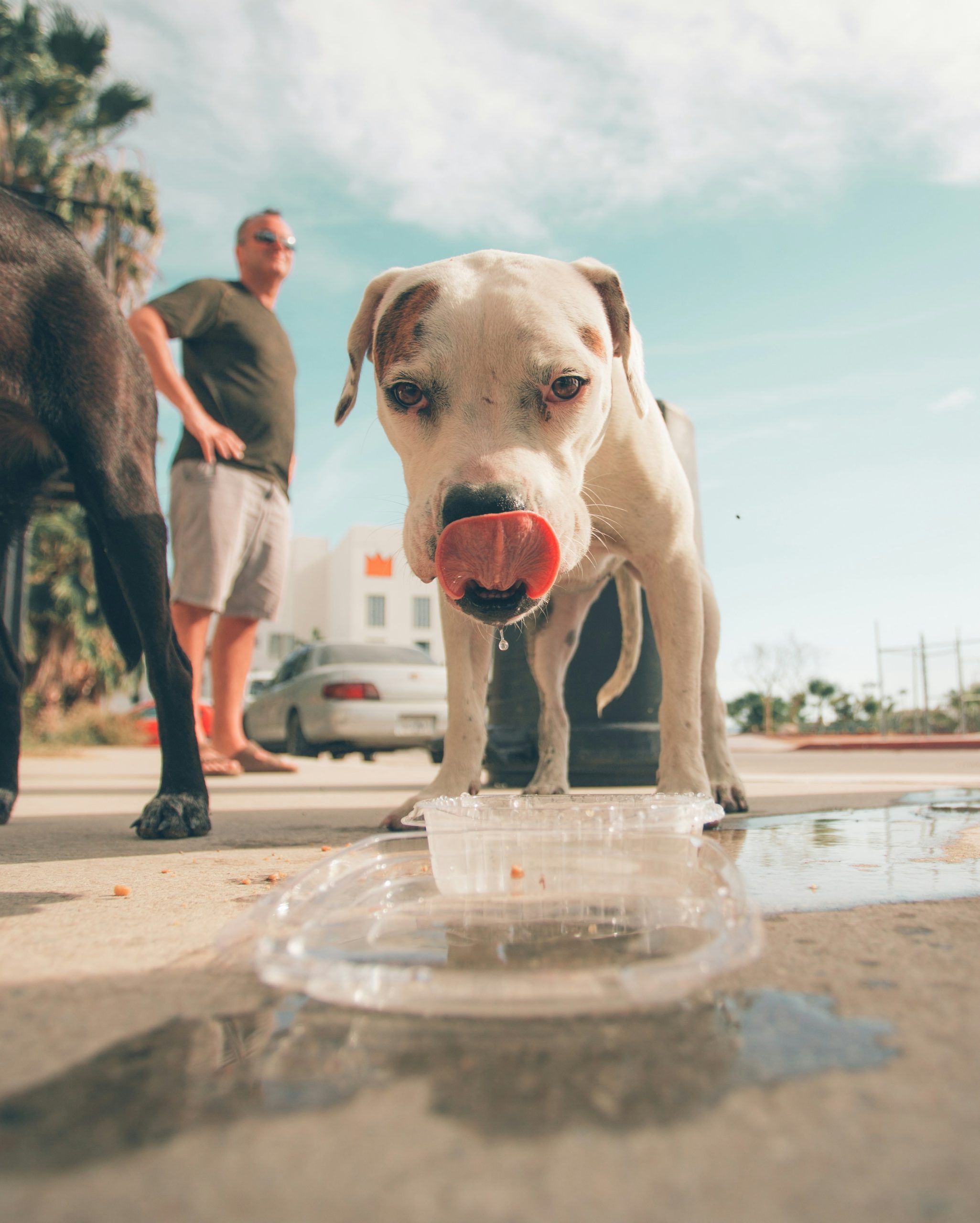Emergency First Aid: Saving Your Dog from Heatstroke
Learn how to recognize and treat heatstroke in dogs, including emergency first aid procedures and veterinary treatment, as well as preventative measures to keep your furry friend safe.
Introduction to Heatstroke in Dogs
Pets, including dogs and cats, are vulnerable to heatstroke due to their inability to regulate body temperature like humans. Unlike humans who can sweat to cool down, pets rely on panting to release heat, making them more prone to overheating. It’s crucial for pet owners to recognize the early signs of heatstroke, such as excessive panting, restlessness, drooling, and an increased heart rate, as prompt action is essential in preventing the condition from escalating.
Certain situations can predispose pets to heatstroke, such as leaving them in a hot car or exposing them to intense physical activity in warm weather. For example, a dog left in a car on a summer day, even with the windows cracked, can quickly succumb to heatstroke in dogs due to the rapid increase in temperature within the vehicle. Similarly, a dog engaged in vigorous exercise on a hot day without access to water or shade is at high risk of developing heatstroke. Therefore, understanding the environmental risk factors that can lead to heatstroke is crucial for pet owners to protect their furry companions from this life-threatening condition.
Understanding Heatstroke in Dogs
When it comes to heatstroke in dogs, certain factors can make some pets more susceptible than others. For instance, overweight dogs are at higher risk due to their bodies generating more heat during physical activity. Additionally, flat-faced breeds, like pugs or bulldogs, have difficulty regulating their body temperature because of their shorter airways, making them more prone to heatstroke. Moreover, animals with thick fur coats struggle to dissipate heat efficiently, especially in hot and humid conditions, putting them at an increased risk of overheating.
Furthermore, age and pre-existing health conditions play a significant role in a dog’s vulnerability to heatstroke. Older dogs may have underlying health issues that impact their ability to cope with high temperatures, making them more susceptible to heat-related illnesses. Similarly, very young animals, whose internal temperature regulation systems are not fully developed, are also at a heightened risk of heatstroke. Understanding these risk factors is crucial for dog owners to take proactive measures to prevent heatstroke and ensure the well-being of their furry companions.
Signs and Symptoms of Heatstroke
Heatstroke in dogs can progress through various stages, with advanced cases showing signs such as lethargy, confusion, weakness, collapse, and even seizures. For instance, a dog suffering from heatstroke may initially exhibit excessive panting and weakness, followed by drooling, vomiting, and eventually collapsing. These symptoms can rapidly escalate, leading to life-threatening conditions if not promptly addressed.
When diagnosing heatstroke in dogs, veterinarians typically consider the animal’s history, observed clinical signs, and perform necessary blood work to confirm the condition. For example, blood tests may reveal elevated body temperatures and abnormalities indicative of organ distress. Treatment for heatstroke involves a multi-faceted approach, including active cooling methods like applying cool water to the dog’s body, providing IV fluids to rehydrate and stabilize the dog, and administering medications to protect vital organs from further damage [2]. Immediate recognition and intervention are crucial in managing heatstroke effectively and improving the chances of the dog’s survival.
Preventing heatstroke in dogs involves understanding the risk factors and taking proactive measures to ensure their well-being, such as avoiding leaving them in hot cars, providing shaded areas and cool water, and moderating their exercise in warm weather. By recognizing the early signs of heatstroke, dog owners can take swift action to prevent the condition from progressing to more severe stages, ultimately safeguarding their pet’s health and safety.
Emergency First Aid Procedures for Dogs
When it comes to providing emergency first aid for a dog suffering from heatstroke, quick and appropriate actions can make a significant difference in their recovery. One crucial step is to swiftly move the affected dog to a cooler area. For example, if you are outdoors, find a shady spot or bring the dog inside to an air-conditioned room to help lower their body temperature.
Once you have relocated the dog, the next vital step is to cool them down. Pouring cool (not cold) water over the dog’s body can aid in reducing their body temperature. It’s important to note that using cold water or ice should be avoided as this can lead to constriction of blood vessels, potentially hindering the cooling process. Moreover, wet towels should not be used as they can trap heat and insulate the body, counteracting the cooling efforts.
In addition to these immediate actions, seeking prompt veterinary care is crucial for the dog’s well-being. Veterinarians can provide further assessment, treatment, and supportive care tailored to the specific needs of a dog suffering from heatstroke. Remember, time is of the essence in such situations, and quick intervention can greatly improve the chances of a positive outcome for the dog.
Veterinary Treatment for Heatstroke
Veterinary treatment for dogs with heatstroke is crucial for their recovery and survival. When a dog is affected by heatstroke, immediate intervention is necessary to prevent organ damage and potential fatalities. Treatment usually involves a combination of therapies, such as administering intravenous (IV) fluids to rehydrate the dog and maintain electrolyte balance. Additionally, oxygen therapy may be provided to ensure the dog receives enough oxygen to support vital organ functions.
In cases of severe heatstroke, dogs may require hospitalization for approximately a week. During this time, veterinarians closely monitor the dog for any complications that may arise due to the heatstroke. The intensive care provided in a veterinary hospital setting significantly increases the chances of the dog’s recovery. For diagnosis, veterinarians rely on a series of tests, including blood tests, urinalysis, and joint fluid analysis. These tests help in assessing the extent of organ damage and guide the treatment plan. Once diagnosed, treatment may involve the administration of antibiotics to prevent infections, pain relievers to alleviate discomfort, and anti-inflammatory drugs to reduce inflammation and support the healing process.
Prevention and Safety Measures
Preventing heatstroke in dogs is crucial for their well-being and health. One key aspect of prevention is ensuring that dogs have access to shaded areas, especially during hot weather. For example, if a dog is spending time outdoors, it’s essential to have a shaded spot where they can rest and cool down. By providing shade, dog owners can help their pets avoid overheating and reduce the risk of heatstroke.
Limiting exercise on warm days is another important preventive measure. Dogs, especially those more susceptible to heatstroke like brachycephalic breeds, elderly dogs, and overweight dogs, should not engage in strenuous physical activities when temperatures are high. For instance, instead of going for a long run during a heatwave, it’s better to opt for shorter and more relaxed walks in the early morning or late evening when it’s cooler. This simple adjustment can significantly lower the chances of heatstroke in dogs.
Furthermore, avoiding hot pavements is crucial in preventing heat-related issues in dogs. Asphalt and concrete surfaces can become extremely hot during sunny days, causing paw pad burns and contributing to overall body temperature elevation in dogs. As a precaution, dog owners should test the pavement temperature with the back of their hand before allowing their dogs to walk on it. If it’s too hot for their hand, it’s too hot for the dog’s paws, and alternative walking surfaces should be sought to prevent heatstroke. By being mindful of these preventive measures, dog owners can help keep their furry companions safe and healthy during warm weather.




